A hydraulic press is a compression molding press that operates by exerting hydraulic pressure, or fluid pressure, via a cylinder on the object being pressed for a specific purpose. Manufacturers use hydraulic presses to stamp metal material into a wide range of finished products and parts. They can also use them to perform other forming processes, including: blanking, clinching, deep drawing, forging, molding, punching and shearing. Read More…
When it comes to the hydraulic press industry, you want nothing but the very best! We have over 50 years of experience in the industry manufacturing quality products for our customers.
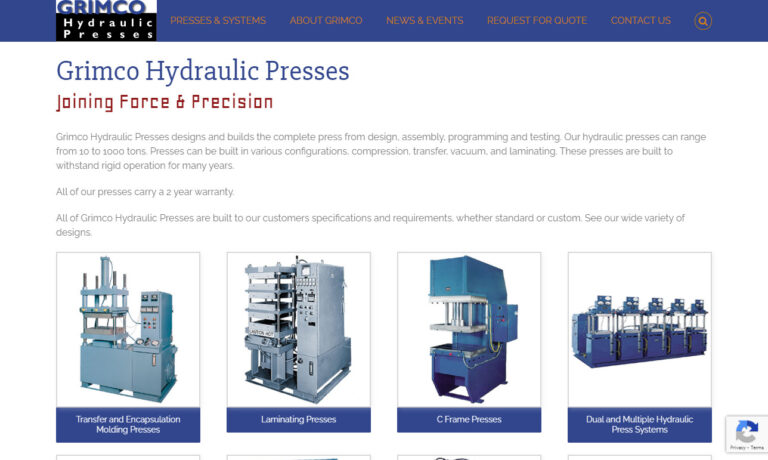
Our hydraulic press designs are one-of-a-kind. We work with our customers to determine the best hydraulic presses for their applications. Here at Savage Engineering & Sales, Inc. we take customer satisfaction very seriously.
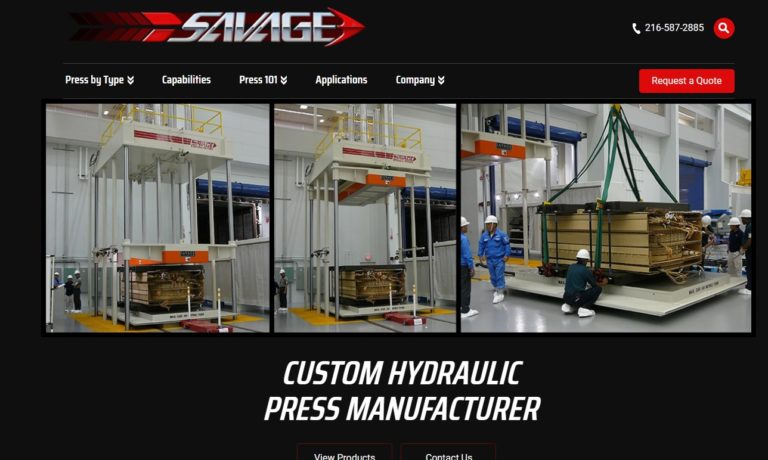
At AIDA-America Corp., we are dedicated to advancing the manufacturing industry through our expertise in hydraulic press technology. We design and build presses that deliver precision, efficiency, and reliability for high-volume production environments.

At Eagle Press & Equipment Co., we are dedicated to engineering and manufacturing high-quality hydraulic presses that meet the diverse needs of industries worldwide. With decades of expertise, we have built a reputation for delivering presses that offer superior performance, reliability, and precision, supporting everything from small-scale production to heavy-duty manufacturing applications.
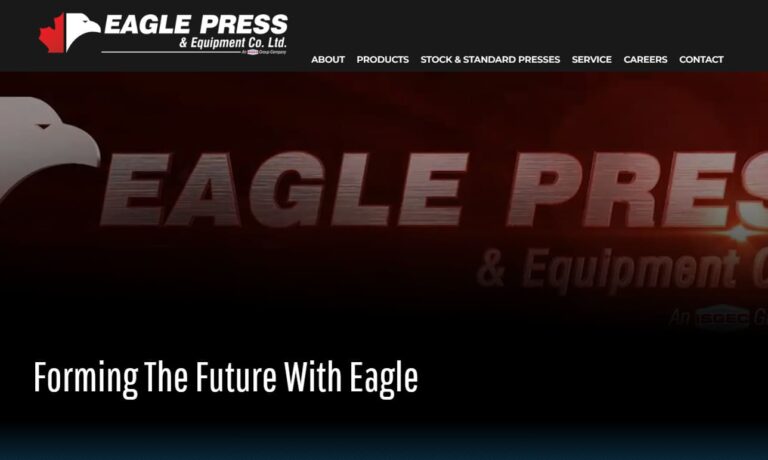
At Hydraulico Inc., we have built our reputation as a leader in hydraulic press engineering by combining decades of expertise with a passion for innovation and precision. We design and manufacture high-performance hydraulic presses that meet the demands of industries ranging from automotive and aerospace to metal forming, appliance production, and advanced material processing.

More Hydraulic Press Manufacturers
The hydraulic press is an essential industrial machine that has revolutionized modern manufacturing and fabrication processes. Its presence is felt across a wide array of industries, thanks to its unmatched ability to generate substantial force in a compact footprint. From the automotive industry, where it is crucial for crafting car body panels and engine components, to the appliance sector for forming microwave oven parts, refrigerator panels, and dishwasher assemblies, the hydraulic press is vital for efficient, precise mass production. Furthermore, the food and beverage industry relies on hydraulic presses for manufacturing beverage cans and packaging solutions, while sectors such as aerospace engineering, marine fabrication, ceramics, military defense, and the pulp and paper industry depend on hydraulic presses for forming, molding, deep drawing, and compressive tasks where accuracy and high tonnage are paramount.
Are you looking to optimize your manufacturing process or find a reliable hydraulic press supplier? Explore the most common applications, types, and key benefits of hydraulic presses to guide your purchasing decision and maximize production efficiency.
History of the Hydraulic Press
The journey of the hydraulic press dates back to 1795, when Joseph Bramah, a renowned British inventor, unveiled the Bramah press—an innovation that would forever change the course of industrial engineering. Before this remarkable invention, Bramah had already made significant contributions, such as developing the flush toilet and advancing the study of fluid mechanics. His work was rooted in Pascal’s law, which states that pressure applied to a confined, incompressible fluid is transmitted equally in all directions within the fluid. This principle forms the foundation of all hydraulic systems, including the modern hydraulic press.
Experimenting with these fluid dynamics principles, Bramah designed a device featuring two interconnected cylinders of different sizes filled with liquid. When pressure was applied to the smaller cylinder, the force was transmitted via the liquid to the larger cylinder, amplifying the output. Bramah, together with his colleague Henry Maudslay, refined this concept by using well-matched pistons and innovative self-tightening seals, ensuring the system’s integrity under pressure. This principle—harnessing the power of liquid pressure—remains at the heart of every hydraulic press in use today.
The adoption of the hydraulic press in the 19th and 20th centuries propelled advancements across industries such as agriculture, transportation, heavy equipment manufacturing, and infrastructure development. Today, the hydraulic press continues to evolve, integrating cutting-edge CNC automation and digital controls while retaining the core principles that deliver unparalleled force and versatility.
How a Hydraulic Press Works
At its core, a hydraulic press is a machine designed to compress, form, or assemble materials—including metals, plastics, rubbers, composites, and wood—through the application of hydraulic pressure. It operates on Pascal’s principle, which ensures that pressure exerted on a fluid in a closed system is distributed evenly, providing a consistent and controllable source of force.
Key components of a typical hydraulic press include:
- Main frame: The structural backbone supporting all pressing operations, ensuring stability and rigidity.
- Power system: Incorporates a hydraulic pump or motor that generates and controls hydraulic pressure.
- Hydraulic cylinders and pistons: Responsible for translating hydraulic energy into mechanical force.
- Control unit: Provides precision control over pressing operations, pressure levels, speed, dwell time, and safety interlocks.
The pressing cycle begins when the hydraulic pump forces fluid into a small cylinder. As the operator or an automated system activates the press, the piston pushes the fluid into a larger cylinder, multiplying the force according to the ratio of cylinder sizes. With each cycle, the pressure builds until it is sufficient to drive the ram or platen down onto the workpiece, deforming or assembling it as required. Safety mechanisms, such as overload relief valves and pressure sensors, ensure that the machine operates within safe limits, protecting both the equipment and operators.
Curious about the science behind hydraulic press force amplification? Learn how cylinder size and hydraulic pressure combine to deliver precise, repeatable results for your forming or assembly needs.
Hydraulic Press Types
Hydraulic presses are engineered in a variety of configurations, each tailored for specific applications and industries. Understanding the differences between press types is key to selecting the right machine for your production requirements, whether you need deep drawing capability, high-speed stamping, or specialized forming.
C-Frame Press
The C-frame hydraulic press is ideal for precise metal forming, straightening, blanking, punching, drawing, and riveting. Its compact, ‘C’-shaped structure minimizes floor space, making it an excellent choice for smaller workshops and mid-sized manufacturing plants. C-frame presses are available in manual, semi-automatic, and fully automatic variants. Their open frame design facilitates easy access for operators, while advanced models offer features such as programmable stroke depth, force monitoring, and integrated safety systems.
H-Frame Press
The H-frame hydraulic press—also known as a workshop or shop press—features a robust ‘H’-shaped welded frame, columns, and a vertically moving press cylinder. It is commonly used for coining, crimping, bending, punching, and trimming operations. H-frame presses are highly flexible, available with hand pumps for low-volume tasks or electric and air pumps for industrial-scale production. They are indispensable in automotive repair, maintenance facilities, and industrial production lines where versatility and easy adjustment are crucial.
Laminating Press
A laminating press is designed to bond materials by applying both heat and pressure, either for surface protection or for manufacturing multi-layered electronic components. These presses use heated and cooled platens to ensure uniform lamination, making them vital in electronics, plastics, and card manufacturing industries.
Stamping Press
The hydraulic stamping press is engineered for high-speed production of stamped parts, especially in the automotive, appliance, and metalworking sectors. Stamping presses use dies to shape or cut materials, allowing for precision manufacturing of panels, brackets, and components. Their programmable controls ensure repeatable accuracy and integration with automated feed systems for continuous production.
Transfer Press
Transfer presses automate the process of feeding and forming sheet metal, plastic, or rubber by moving the material through a series of dies in a single press cycle. This makes them ideal for high-volume production of complex parts, such as electronic housings, connectors, and automotive components.
Vacuum Press
The vacuum hydraulic press creates a controlled environment to encapsulate, seal, or laminate products using atmospheric pressure. Frequently used for encasing ID cards, credit cards, and circuit boards, vacuum presses prevent contamination and air bubbles during lamination or molding, ensuring product integrity.
Platen Press
Platen presses are distinguished by their large, flat pressing surfaces (platens) and powerful rams. They are widely used for molding composite materials, vulcanizing rubber, and forming plastics. The even distribution of pressure across the platen surface ensures consistent, high-quality results for large or irregularly shaped workpieces.
Forging Press
Forging presses—also called hydraulic forge presses—apply controlled pressure to shape metal blanks into finished components. They are instrumental in the automotive and aerospace industries for producing strong, fatigue-resistant parts such as crankshafts, gears, and axles. Hydraulic forging presses enable both open-die and closed-die forging processes, supporting high tonnage requirements and precise metal flow.
Hydraulic Press Brake
Hydraulic press brakes are specialized machines used for bending and folding sheet metal. They typically include two robust C-frames, a movable upper beam, and precision tooling. Modern hydraulic press brakes often feature CNC controls and synchronized hydraulic cylinders for high-precision forming, making them indispensable in metal fabrication shops and manufacturing plants producing enclosures, panels, and brackets.
Shop Press
Also known as a workshop hydraulic press, the shop press excels at repair and maintenance tasks such as pressing bearings, bushings, u-joints, and straightening bent shafts or metal parts. Its versatility and compact size make it a staple in automotive repair shops, small manufacturing operations, and even home garages.
Four-Column Hydraulic Press
Four-column hydraulic presses deliver high tonnage and uniform force distribution, making them ideal for tasks like deep drawing, die cutting, trimming, and stamping of large or heavy workpieces. Their open structure allows for easy integration with automated feed systems and large dies, supporting mass production and heavy-duty applications.
Electric Servo Press
The electric servo press is a modern, energy-efficient alternative, utilizing electric motors and precision servo controls to generate linear pressing force. These presses are exceptionally quiet, reduce energy consumption by up to 80%, and deliver precise force and position control—making them ideal for high-precision assembly, riveting, and electronics manufacturing.
Gib-Guided Press
Gib-guided hydraulic presses provide superior ram guidance and stability, enabling exceptional accuracy in deep drawing, blanking, coining, and forming operations. Their robust construction and hydraulic cushioning make them a preferred choice for demanding sheet metal forming and precision stamping tasks.
Not sure which hydraulic press type is right for your business? Contact an expert manufacturer or compare hydraulic press suppliers for tailored recommendations based on your specific application, material requirements, and production volume.
Hydraulic Press Equipment Components
A high-performance hydraulic press relies on an integrated hydraulic system and quality components to ensure efficiency, safety, and longevity. Understanding the core parts of a hydraulic press can help you evaluate machine durability, maintenance requirements, and customization options.
- Cylinders (Punches/Pistons): Responsible for converting hydraulic energy into mechanical movement and force.
- Hydraulic pipes and hoses: Facilitate the movement of pressurized fluid between cylinders and other hydraulic components.
- Hydraulic fluid: The medium for transmitting pressure; fluid selection (e.g., mineral oil, synthetic fluid) affects performance and maintenance.
- Die or anvil: The tooling that shapes or assembles the workpiece during the pressing cycle.
- Pump and motor: Generate the hydraulic pressure required for pressing operations.
- Control system: Ranges from manual levers to advanced PLC or CNC interfaces, enabling precise operation and integration with automated lines.
- Safety systems: Include overload relief valves, pressure sensors, light curtains, and emergency stops to ensure safe operation.
During operation, the hydraulic pump generates pressure, which is transmitted by hydraulic fluid to the main cylinder. As the fluid fills the smaller cylinder, compression occurs, and the pressurized fluid moves through hoses and pipes into the master cylinder. The resulting movement drives the ram or punch into the die, completing the pressing operation. The cycle is controlled for repeatability and safety, with built-in safeguards against overloads or improper operation.
Wondering how to maintain your hydraulic press for maximum uptime? Regularly inspect hoses, seals, and fluid levels, and follow manufacturer-recommended maintenance schedules to minimize downtime and extend the life of your machine.
How to Use a Hydraulic Press
Proper operation of a hydraulic press is critical for workplace safety and optimal results. Operators should undergo comprehensive training in press operation, safety procedures, and emergency protocols before using any hydraulic equipment. Here is a step-by-step overview:
- Training and Certification: Ensure all operators are trained in hydraulic press fundamentals, equipment controls, and safety standards.
- Pre-operation Inspection: Check for visible wear, leaks, misalignment, or malfunctioning safety interlocks. Confirm that all emergency stops and guards are functional.
- Material Setup: Position and align the workpiece accurately on the die or anvil, using fixtures or guides as needed to ensure even force distribution.
- PPE Compliance: Wear appropriate personal protective equipment (PPE), including safety glasses, gloves, and steel-toe boots.
- System Activation: Start the hydraulic pump and set pressure and speed parameters according to the material and operation requirements.
- Operation Monitoring: Closely observe the pressing cycle, monitor gauge readings, and remain alert for any unusual noises, vibrations, or pressure spikes.
- Controlled Pressure Release: Upon completion, gradually release pressure and remove the finished part safely.
- Routine Maintenance: Clean and lubricate components regularly, check hydraulic fluid quality, and replace worn parts as specified by the manufacturer.
Interested in improving hydraulic press safety? Consider integrating digital controls, light curtains, and remote monitoring for enhanced protection and operational efficiency.
Hydraulic Press Benefits
Hydraulic presses offer a wide range of advantages over traditional mechanical and pneumatic presses, making them a popular choice for industries seeking efficiency, flexibility, and cost savings.
Superior Force Capability
Hydraulic presses can generate significantly higher tonnage than other press types, allowing them to handle heavy-duty tasks such as deep drawing, forming, and assembly of thick or tough materials. The force output is easily adjustable, supporting a variety of operations from delicate assembly to heavy forging.
Lower Investment and Maintenance Costs
The straightforward design of hydraulic presses—with fewer moving parts—translates to lower initial investment and minimal maintenance. Replacement parts are widely available, and repairs typically do not require extensive machine disassembly, reducing downtime and total cost of ownership.
Consistent and Reliable Operation
Hydraulic presses deliver precise, repeatable force throughout the entire stroke, regardless of position. This consistency reduces scrap rates and enhances production quality. Press overload is virtually impossible thanks to built-in relief valves and pressure controls.
Ease of Use and Flexibility
Operators can easily adjust ram force, dwell time, stroke speed, and direction using user-friendly control panels or advanced CNC interfaces. This flexibility makes hydraulic presses suitable for a diverse range of applications, from prototyping and short runs to high-volume production.
Low Noise and Improved Workplace Environment
Compared to mechanical presses, hydraulic presses generate less noise and vibration, improving working conditions and complying with OSHA noise standards. Modern hydraulic power units are engineered for quiet operation and reduced energy consumption.
Extended Tool and Machine Life
Integrated overload protection and gentle force application extend the lifespan of both the machine and associated tooling. This reduces replacement costs and ensures long-term reliability, even in demanding production environments.
Energy Efficiency and Sustainability
With the advent of electric servo hydraulic presses and variable frequency drives, energy consumption is reduced by up to 80% compared to traditional hydraulic or mechanical presses. This contributes to sustainability initiatives and lowers operational costs.
Considering the total cost of ownership for a hydraulic press? Factor in energy efficiency, maintenance requirements, and machine flexibility alongside the initial purchase price for a comprehensive evaluation.
Hydraulic Press Design and Customization
Hydraulic press manufacturers offer extensive customization to meet the unique needs of various industries and applications. Key design parameters include:
- Load capacity: Hydraulic presses can be engineered for forces ranging from a few tons (for light assembly or small parts) to over 10,000 tons (for heavy forging and large-scale forming).
- Frame configuration: Choose from C-frame, H-frame, four-post, or custom designs to accommodate workpiece size, access requirements, and integration with automation.
- Material selection: High-strength stainless steel, tool steel, aluminum, or brass are used for frames and critical components to ensure durability, corrosion resistance, and longevity.
- Station setup: Single-station presses are ideal for repetitive operations, while multi-station presses support sequential or multi-tool processing for increased productivity.
- Press controls: Manual controls for simple operations, or advanced PLC/CNC systems for programmable automation, remote diagnostics, and process integration.
- Hydraulic fluid and power unit: Specify fluid type (synthetic, mineral, fire-resistant) and pump size to optimize performance and maintenance intervals.
- Tooling customization: Design dies and punches to match specific part geometries, tolerances, or production requirements.
- Safety and compliance features: Integrate light curtains, interlocks, automatic guards, and safety PLCs to meet or exceed industry standards.
Have unique requirements for your production line? Request a custom hydraulic press quote from leading manufacturers and specify your desired features, tonnage, automation level, and integration needs.
Hydraulic Press Safety Standards and Compliance
Safety and regulatory compliance are critical considerations in hydraulic press selection, installation, and operation. In the U.S., oversight is provided by the Occupational Safety and Health Administration (OSHA) and the American National Standards Institute (ANSI), which outline requirements for safe press design, installation, maintenance, and operator training.
- OSHA regulations: Define workplace safety protocols, including machine guarding, lockout/tagout, noise exposure limits, and operator training requirements.
- ANSI standards: Specify engineering and operational guidelines for hydraulic presses, such as ANSI B11.2 for press safety.
- CE marking and international compliance: For global operations, compliance with IEC, ISO, and CE standards ensures acceptance in international markets.
Manufacturers are responsible for designing presses that meet or exceed these requirements, providing comprehensive documentation, and offering safety training resources. Users must maintain compliance through training, regular inspection, and adherence to safety protocols—including proper use of personal protective equipment and emergency procedures.
What are the risks of non-compliance? Failing to meet safety standards can result in product recalls, OSHA citations, legal liability, and increased insurance costs. Conversely, compliance improves workplace safety, boosts productivity, and enhances brand reputation—making it a key decision factor for any hydraulic press purchase.
Choosing the Right Hydraulic Press Manufacturer
Selecting a reputable hydraulic press manufacturer is a crucial step in ensuring reliable, efficient, and safe operation for years to come. Start by exploring our comprehensive directory of hydraulic press manufacturers, where you can:
- Compare manufacturers based on expertise, product range, certifications, and customer reviews.
- Review detailed company profiles, including industry specializations, service offerings, and application case studies.
- Access contact forms or request-for-quote (RFQ) options to streamline the supplier selection process.
- Utilize our patented website previewer to efficiently assess each manufacturer’s capabilities and areas of focus.
- Contact multiple hydraulic press suppliers simultaneously using our unified RFQ form for competitive pricing and lead times.
Key factors to consider when choosing a hydraulic press supplier include:
- Industry experience: Manufacturers with proven expertise in your sector (e.g., automotive, aerospace, plastics, metalworking) are more likely to understand your unique requirements.
- Customization capabilities: Assess the ability to deliver tailored solutions, special tooling, automation integration, and support for future upgrades.
- After-sales support: Reliable technical support, fast spare parts delivery, training, and preventive maintenance programs are essential for minimizing downtime.
- Certifications and compliance: Ensure the manufacturer adheres to all relevant safety and quality standards, including ISO, ANSI, and OSHA compliance.
- Customer references: Request testimonials or case studies from customers in similar industries to gauge satisfaction and reliability.
Ready to take the next step? Contact leading hydraulic press manufacturers today to discuss your project requirements, request quotes, or schedule a facility tour. Discover how investing in the right hydraulic press can transform your production capabilities, lower costs, and deliver a lasting competitive advantage.
Still have questions? Explore our FAQs or connect with a hydraulic press expert for personalized guidance on press selection, application engineering, and best practices for safe, efficient operation.


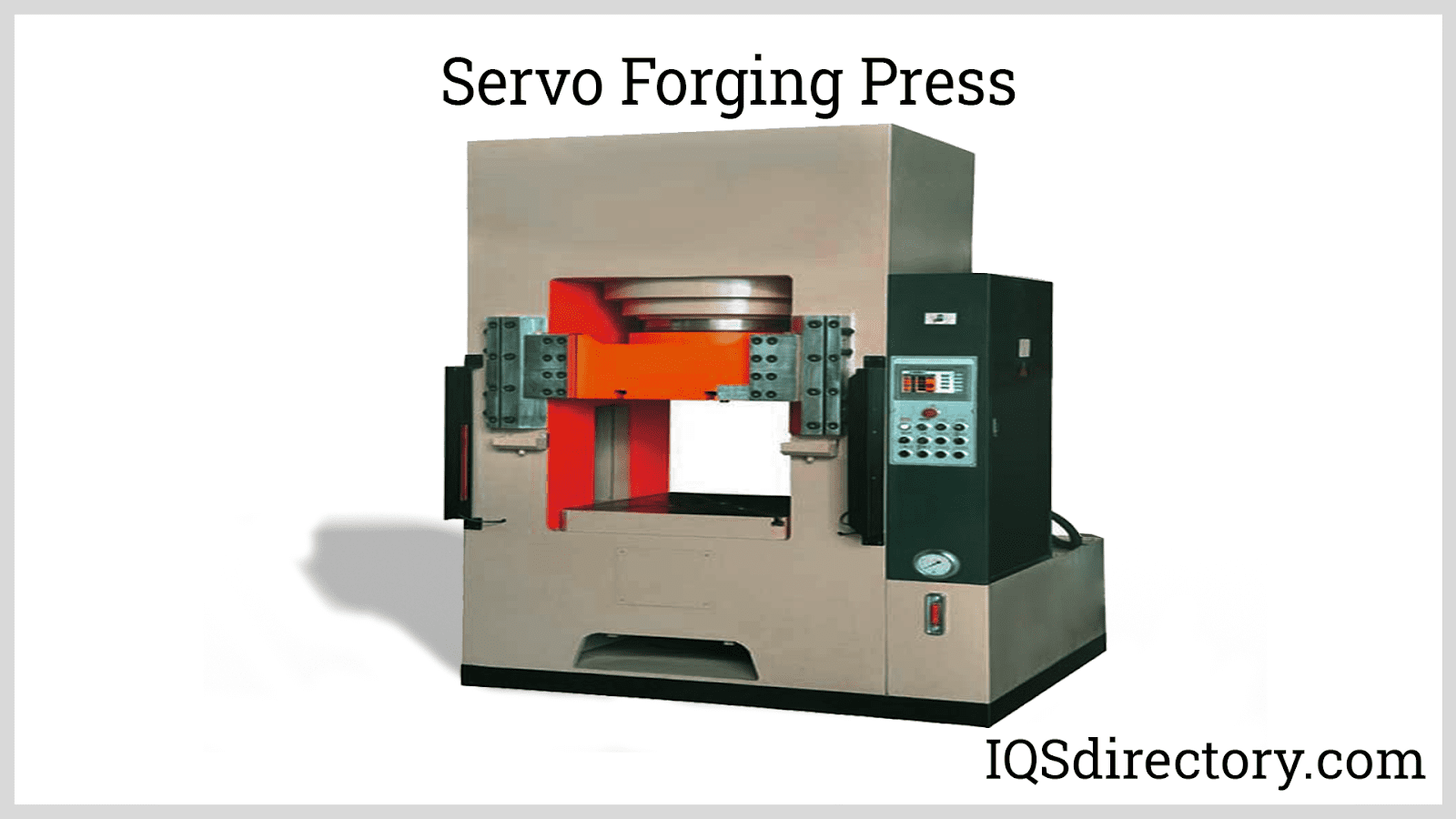
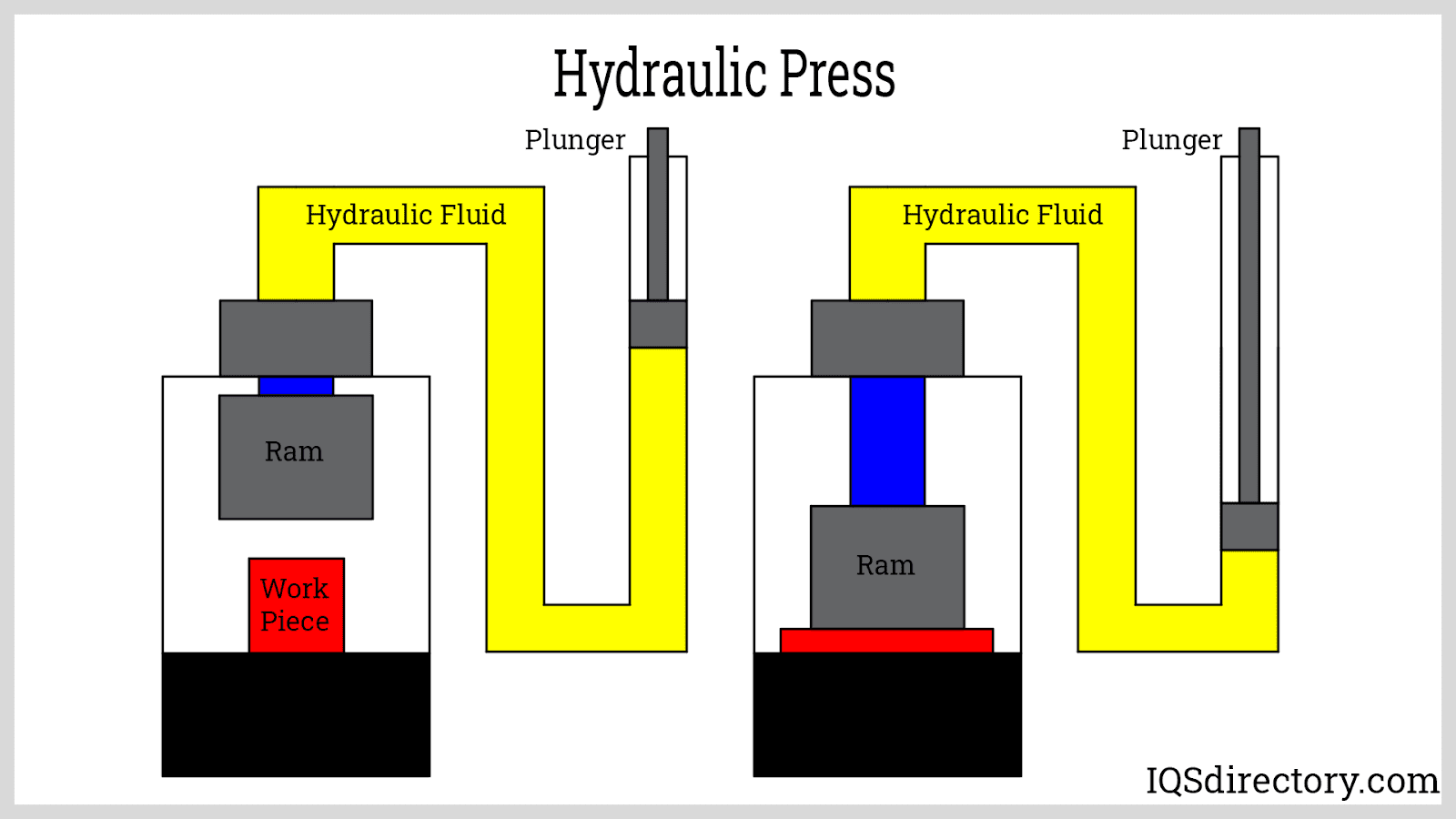
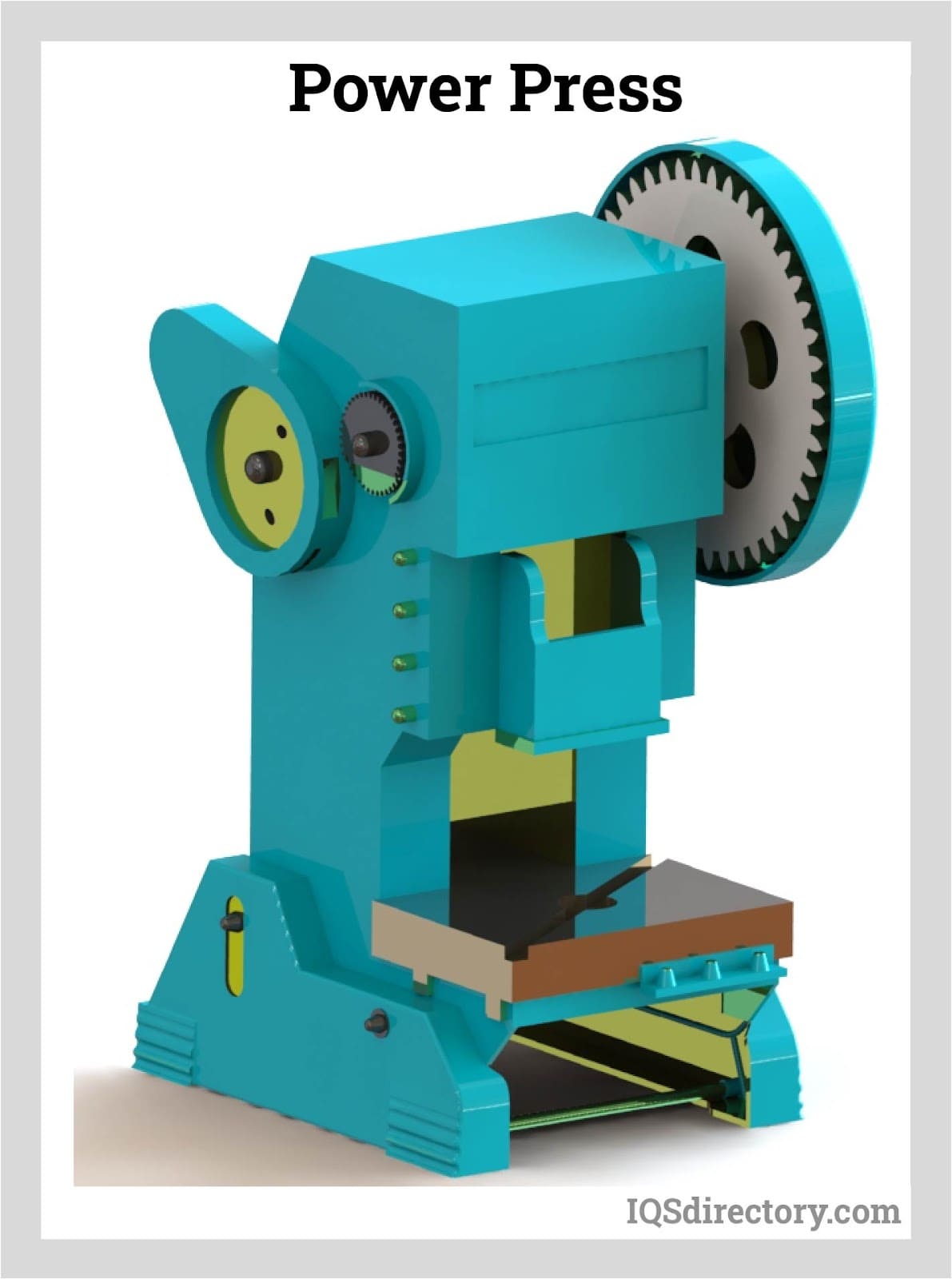
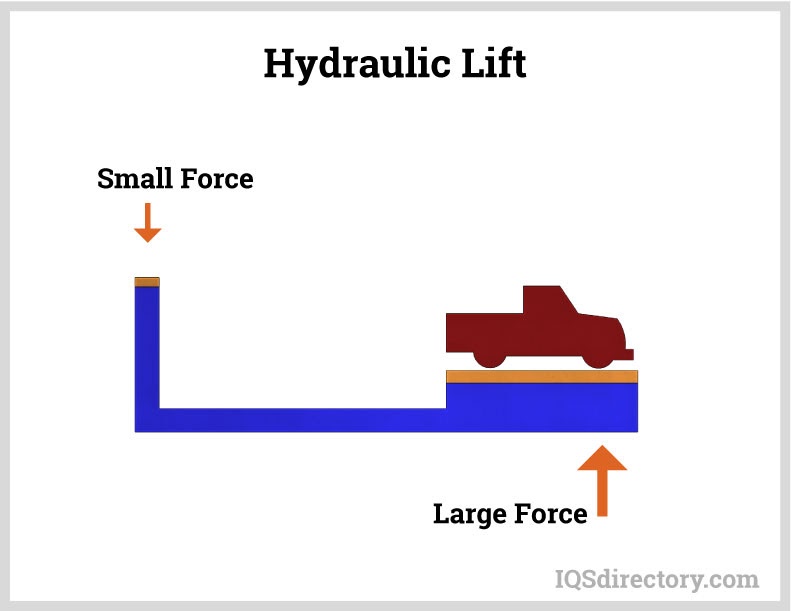
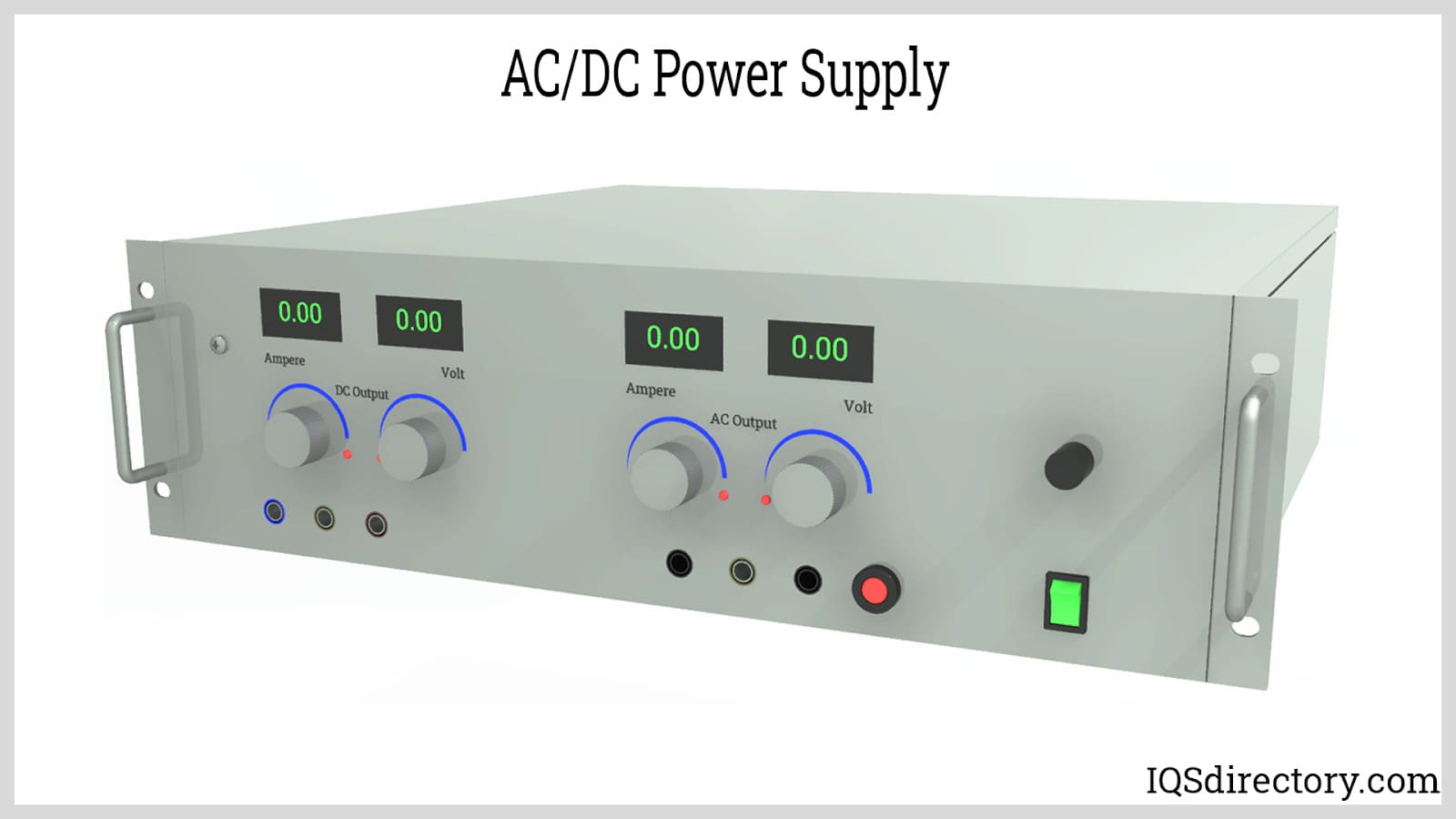
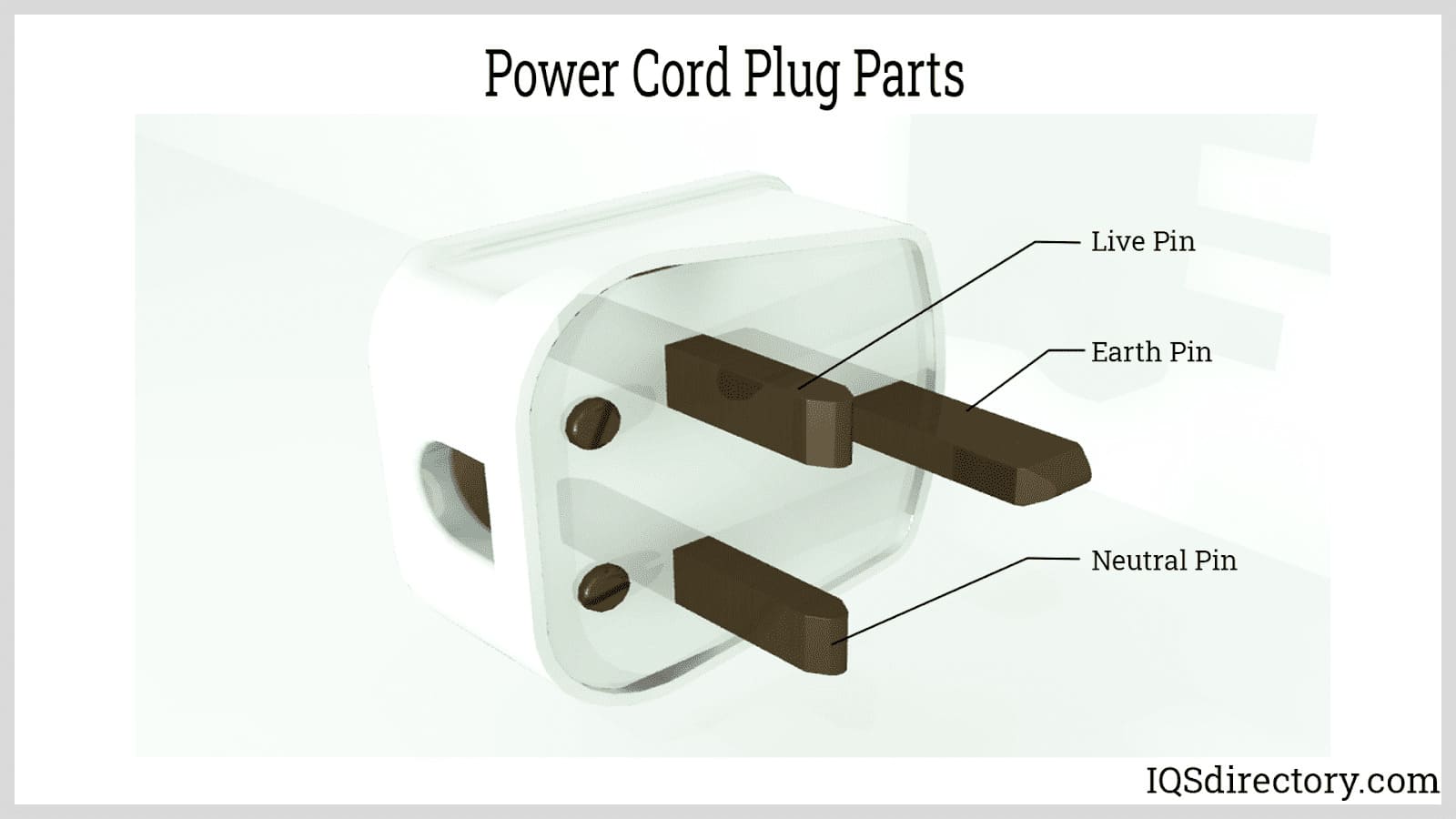

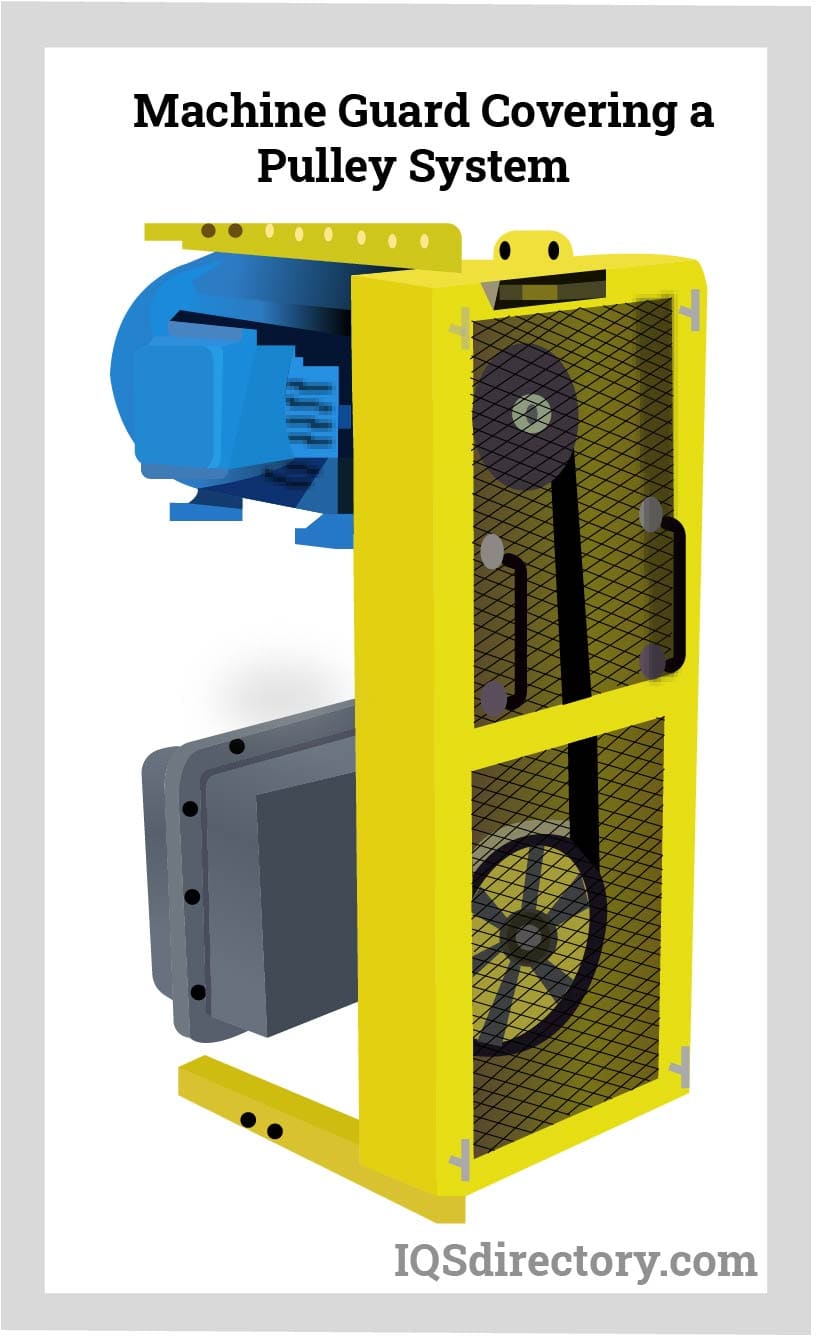
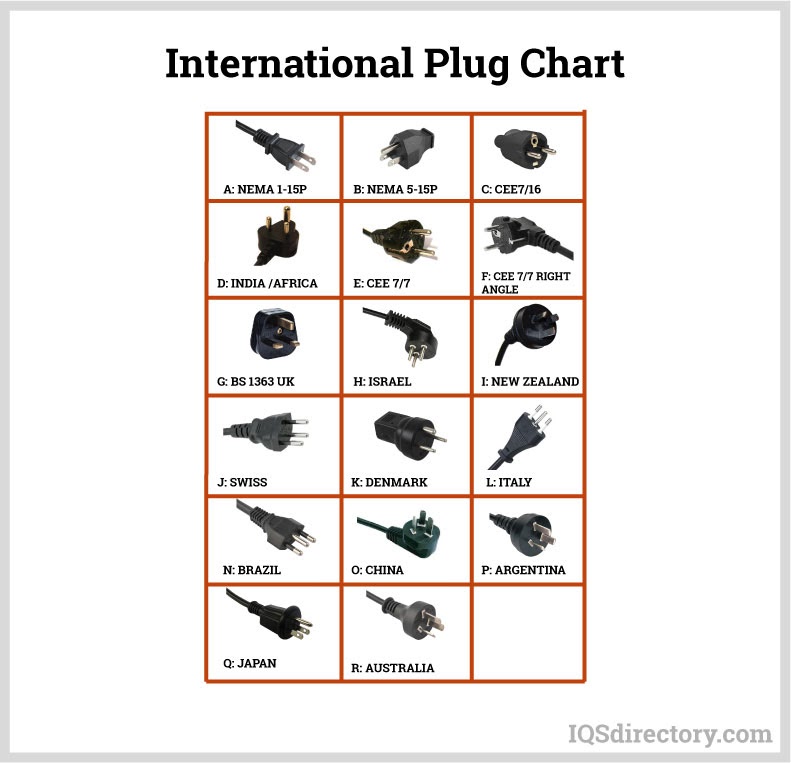
 Automation Equipment
Automation Equipment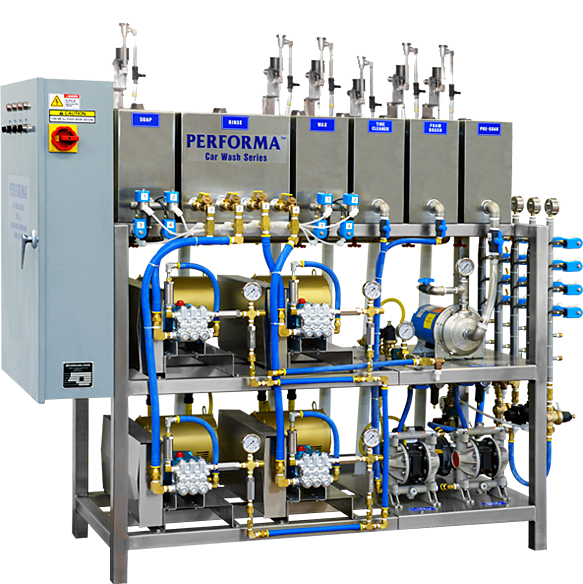 Car Wash Equipment
Car Wash Equipment Centrifuges
Centrifuges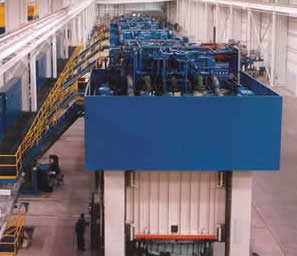 Hydraulic Presses
Hydraulic Presses Lasers
Lasers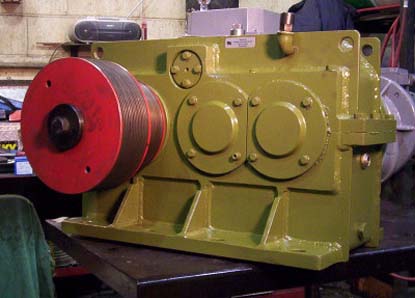 Machinery Rebuilders
Machinery Rebuilders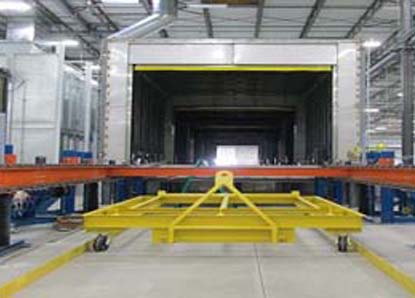 Paint Finishing Equipment
Paint Finishing Equipment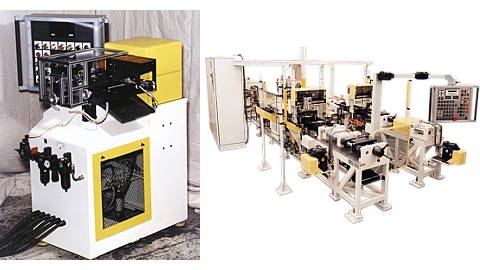 Tube Forming Machines
Tube Forming Machines Castings & Forgings
Castings & Forgings Bulk Material Handling
Bulk Material Handling Electrical & Electronic Components
Electrical & Electronic Components Flow Instrumentation
Flow Instrumentation Hardware
Hardware Material Handling Equipment
Material Handling Equipment Metal Cutting Services
Metal Cutting Services Metal Forming Services
Metal Forming Services Metal Suppliers
Metal Suppliers Motion Control Products
Motion Control Products Plant & Facility Equipment
Plant & Facility Equipment Plant & Facility Supplies
Plant & Facility Supplies Plastic Molding Processes
Plastic Molding Processes Pumps & Valves
Pumps & Valves Recycling Equipment
Recycling Equipment Rubber Products & Services
Rubber Products & Services